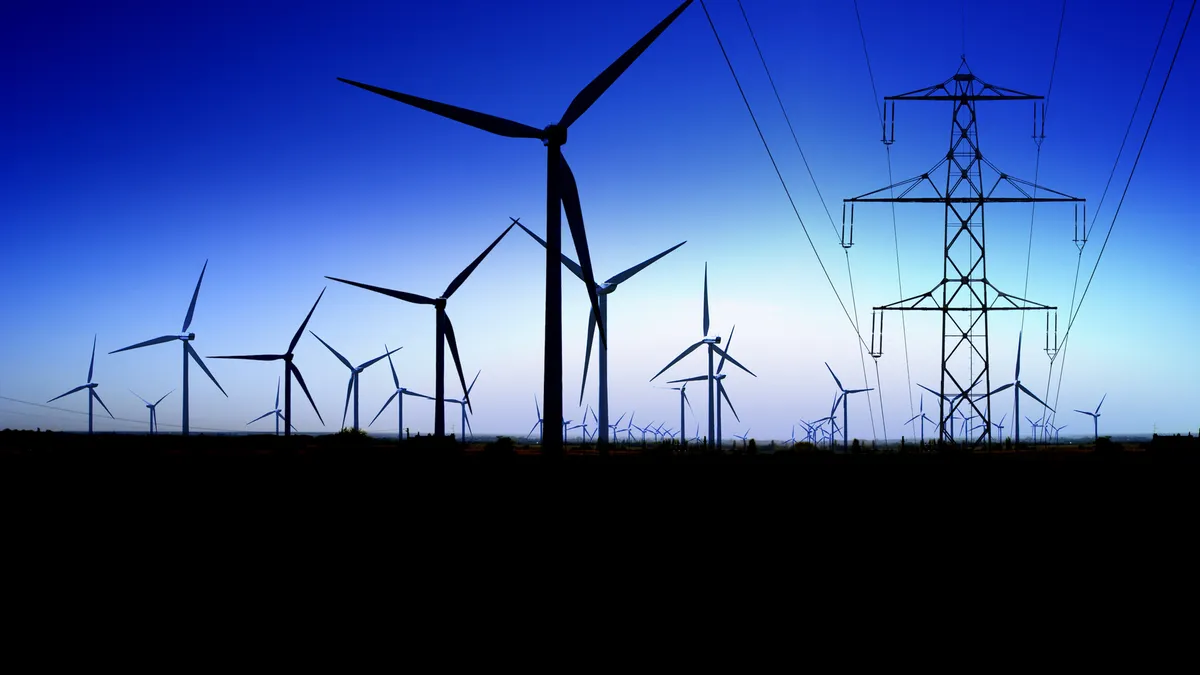Dive Brief:
-
Net zero energy commitments have proliferated among U.S. utilities in recent years, but the majority of companies plan to reach that target much later than the 2035 target set forth by President-Elect Joe Biden, according to a December report by the Energy and Policy Institute.
-
Achieving net zero energy generation — or at least coming close to it — should be possible by 2035, according to EPI research director Matt Kasper. However, it will require utilities to swear off natural gas and accelerate the rate at which they plan to retire their remaining coal plants.
-
Kasper expects encouragement from the Biden administration, coupled with pressure from investors, will prompt utilities to establish more ambitious emissions targets in the years to come.
Dive Insight:
The President-Elect may hope to establish a carbon-neutral energy sector in just fifteen years, but most U.S. utilities are still operating on a longer timeframe, according to the new analysis.
Only a handful of large utilities are on track to meet Biden's 2035 emissions goal, according to the report. The majority of large electric companies have set emissions goals, but their timeline puts net neutrality well beyond 2035, with many companies targeting 2050.
This doesn't mean it's impossible or even unlikely that these utilities will make the 2035 timeline, Kasper said. Getting close to carbon neutral energy nationwide by 2035 with present-day technology is possible, he said, but will require most companies to accelerate their own internal timelines.
Dan Bakal, senior director of electric power for Ceres, said he believes it is likely utilities will make the adjustments necessary to decarbonize, if not by 2035, then not too long after.
"I tend to have a fairly optimistic view of late," he said, "as far as what the sector is committing to....A few years ago, companies wouldn't even set goals, and now we're at this point where there is a ratcheting up, with very little backsliding, so I do think we will see a gradual closing of the gaps between what company goals are, and what we need to see with decarbonization."
The easiest way to do this, according to Kasper, is for utilities to retire their remaining coal plants earlier than anticipated. While a handful of utilities including NIPSCO and NextEra plan to close their last coal plant before 2035, the majority have no established timeline or else plan to end coal generation in the 2040s or later.
“The big solution is just shutting down the coal,” Kasper said. “They still have so much on their systems.”
Utilities may also have to reconsider their plans for new gas generation, according to EPI, which estimated that the average gas plant has a useful life of about 25 years.
"I completely agree that there is still a fair amount of low-hanging fruit" in the utility sector, Bakal said. "I think there's still a lot of low-hanging fruit around coal-fired retirements."
The barriers to these actions, Kasper said, are political, not technological. “Utilities in certain parts of the country don't want to embrace this path,” he said. “They don't want to upset maybe traditional regulators or lawmakers that have embraced coal for decades, and they're not ready to do that even though it makes economic sense to do so.”
The rationale for this attitude, Kasper said, may be tied to some community's economic dependence on coal. For a possible solution, he pointed to the recent resolution of such concerns within the Navajo Nation, which agreed to end coal generation in exchange for commitments from utilities and regulators to develop renewable energy on Navajo lands.
Bakal said the sector will also need to see advances in technology in order to meet the 2035 target, but he was optimistic that innovation would emerge.
"Fifteen years is still time," he said, "especially given the pace of change we've seen over the last decade. There have been some pretty dramatic advances in technology and prices. If we extrapolate that, I imagine we could have a clear path to 2035."
Kasper said he also expects the Biden administration may put in place incentives such as a standalone battery tax credit that make the transition even more attractive to utilities, giving them further reason to pick up the pace.
“I think this industry is going to go with Biden and new faces on the hill saying we're really moving forward,” Kasper said, “and their own data shows they need to be moving faster if they want to show the Biden administration they are decarbonizing.”













